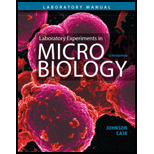
Why are fermentation tubes evaluated at 24 and 48 hours?
What would happen if an organism used up all the carbohydrate in a fermentation tube?
What would the organism use for energy?
What color would the indicator be then?
To analyze:
Fermentation tubes are evaluated at 24 and 48 hours. If an organism used up all carbohydrate in fermentation tube, then what happens and the organism use for energy and the color the indicator shows.
Introduction:
Fermentation is a process that breakdown large and complex sugar into smaller molecules with the help of bacteria and yeast. This process is used to make beer, alcohol, and fermented drinks.
Explanation of Solution
The process occurs in a lack of oxygen known as the anaerobic process as well as produces a significant amount of ATP. Its product is carbon dioxide, lactic acid, and ethanol. The process is very useful in wine as well as beverage industries.
Beer is the product of fermentation that is consumed as an alcoholic beverage. The flavoring of beers is done with hops that usually add bitterness as well as a natural preservative. Fermentation results in natural carbonation within the beer. It contains around four percent to six percent alcohol.
Fermentation can take place without or with the presence of oxygen as well the incubation periods that are prolonged results in the growth of bacteria oxidatively on peptone immediately after consuming the carbohydrate supplied.
A neutralization reaction will take place when an organism will use all the present carbohydrates. The organism will start using peptone as an energy source. The color of the indicator will turn red.
Thus, Fermentation can take place without or with the presence of oxygen as well as the incubation periods that are prolonged results in the growth of bacteria oxidatively on peptone immediately after consuming the carbohydrate supplied.
Want to see more full solutions like this?
Chapter 14 Solutions
Laboratory Experiments in Microbiology (12th Edition) (What's New in Microbiology)
Additional Science Textbook Solutions
Campbell Essential Biology (7th Edition)
The Cosmic Perspective (8th Edition)
Laboratory Manual For Human Anatomy & Physiology
Cosmic Perspective Fundamentals
Microbiology Fundamentals: A Clinical Approach
- What did the Cre-lox system used in the Kikuchi et al. 2010 heart regeneration experiment allow researchers to investigate? What was the purpose of the cmlc2 promoter? What is CreER and why was it used in this experiment? If constitutively active Cre was driven by the cmlc2 promoter, rather than an inducible CreER system, what color would you expect new cardiomyocytes in the regenerated area to be no matter what? Why?arrow_forwardWhat kind of organ size regulation is occurring when you graft multiple organs into a mouse and the graft weight stays the same?arrow_forwardWhat is the concept "calories consumed must equal calories burned" in regrads to nutrition?arrow_forward
- You intend to insert patched dominant negative DNA into the left half of the neural tube of a chick. 1) Which side of the neural tube would you put the positive electrode to ensure that the DNA ends up on the left side? 2) What would be the internal (within the embryo) control for this experiment? 3) How can you be sure that the electroporation method itself is not impacting the embryo? 4) What would you do to ensure that the electroporation is working? How can you tell?arrow_forwardDescribe a method to document the diffusion path and gradient of Sonic Hedgehog through the chicken embryo. If modifying the protein, what is one thing you have to consider in regards to maintaining the protein’s function?arrow_forwardThe following table is from Kumar et. al. Highly Selective Dopamine D3 Receptor (DR) Antagonists and Partial Agonists Based on Eticlopride and the D3R Crystal Structure: New Leads for Opioid Dependence Treatment. J. Med Chem 2016.arrow_forward
- The following figure is from Caterina et al. The capsaicin receptor: a heat activated ion channel in the pain pathway. Nature, 1997. Black boxes indicate capsaicin, white circles indicate resinferatoxin. You are a chef in a fancy new science-themed restaurant. You have a recipe that calls for 1 teaspoon of resinferatoxin, but you feel uncomfortable serving foods with "toxins" in them. How much capsaicin could you substitute instead?arrow_forwardWhat protein is necessary for packaging acetylcholine into synaptic vesicles?arrow_forward1. Match each vocabulary term to its best descriptor A. affinity B. efficacy C. inert D. mimic E. how drugs move through body F. how drugs bind Kd Bmax Agonist Antagonist Pharmacokinetics Pharmacodynamicsarrow_forward
- Surgical Tech For Surgical Tech Pos CareHealth & NutritionISBN:9781337648868Author:AssociationPublisher:Cengage
 Comprehensive Medical Assisting: Administrative a...NursingISBN:9781305964792Author:Wilburta Q. Lindh, Carol D. Tamparo, Barbara M. Dahl, Julie Morris, Cindy CorreaPublisher:Cengage Learning
Comprehensive Medical Assisting: Administrative a...NursingISBN:9781305964792Author:Wilburta Q. Lindh, Carol D. Tamparo, Barbara M. Dahl, Julie Morris, Cindy CorreaPublisher:Cengage Learning Principles Of Radiographic Imaging: An Art And A ...Health & NutritionISBN:9781337711067Author:Richard R. Carlton, Arlene M. Adler, Vesna BalacPublisher:Cengage Learning
Principles Of Radiographic Imaging: An Art And A ...Health & NutritionISBN:9781337711067Author:Richard R. Carlton, Arlene M. Adler, Vesna BalacPublisher:Cengage Learning





